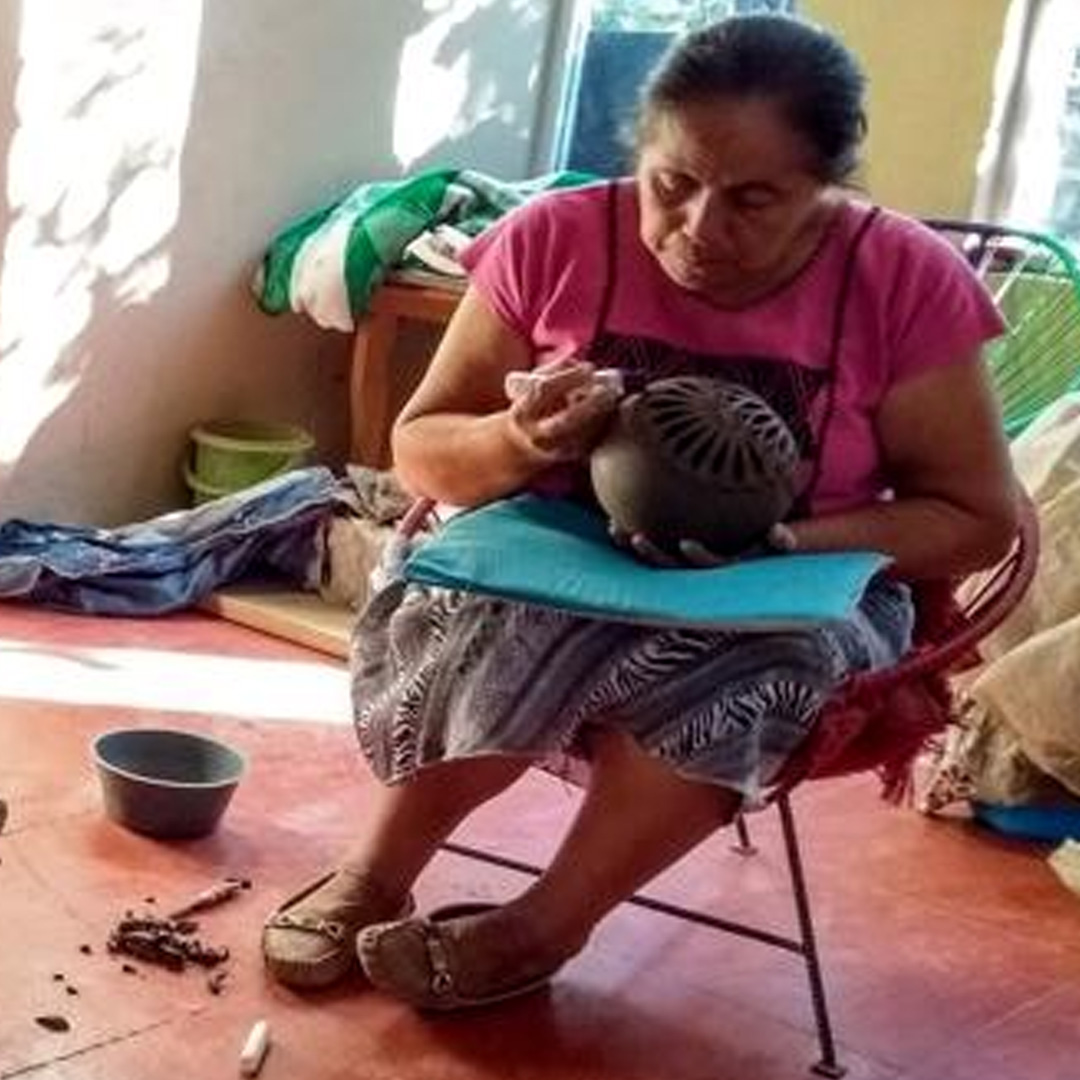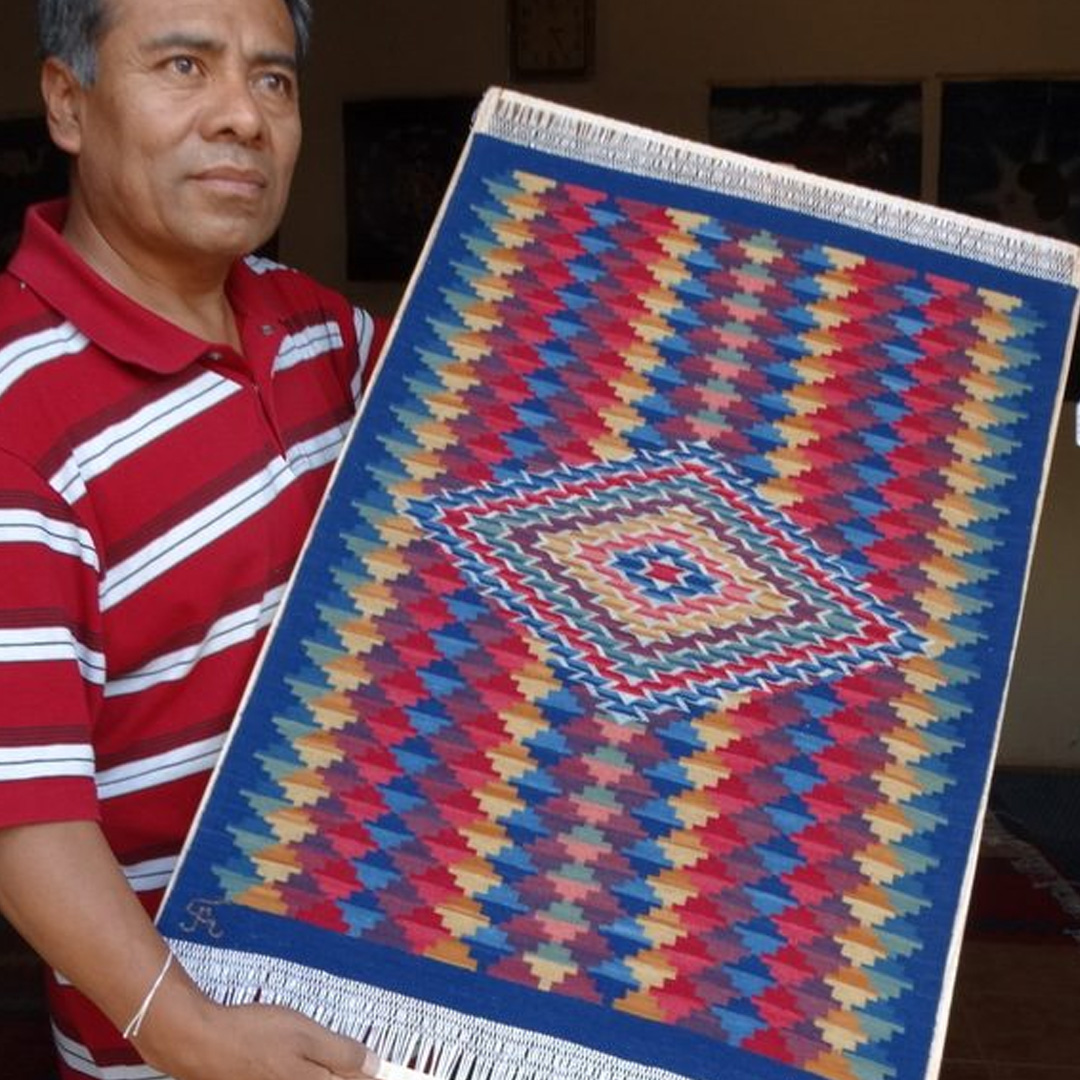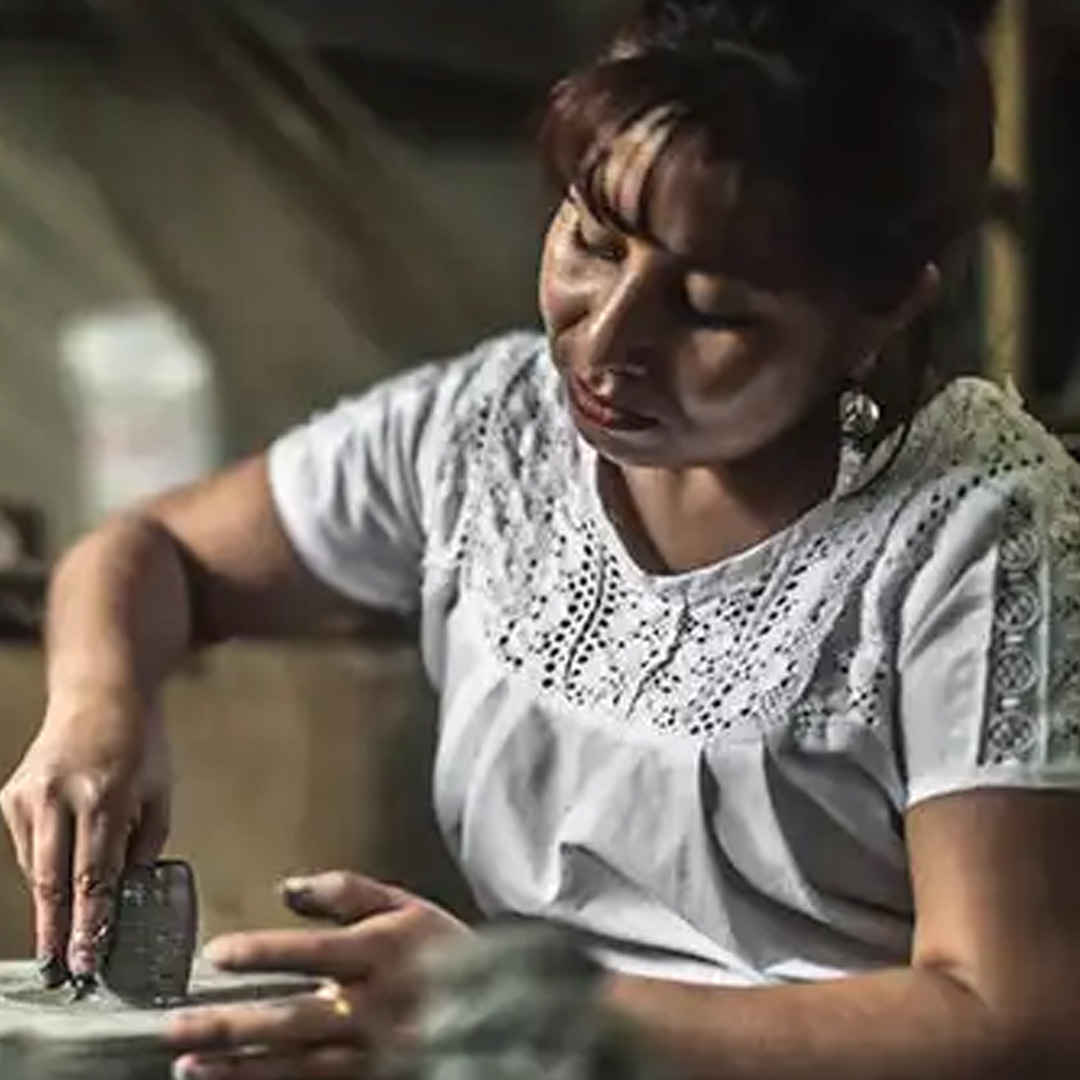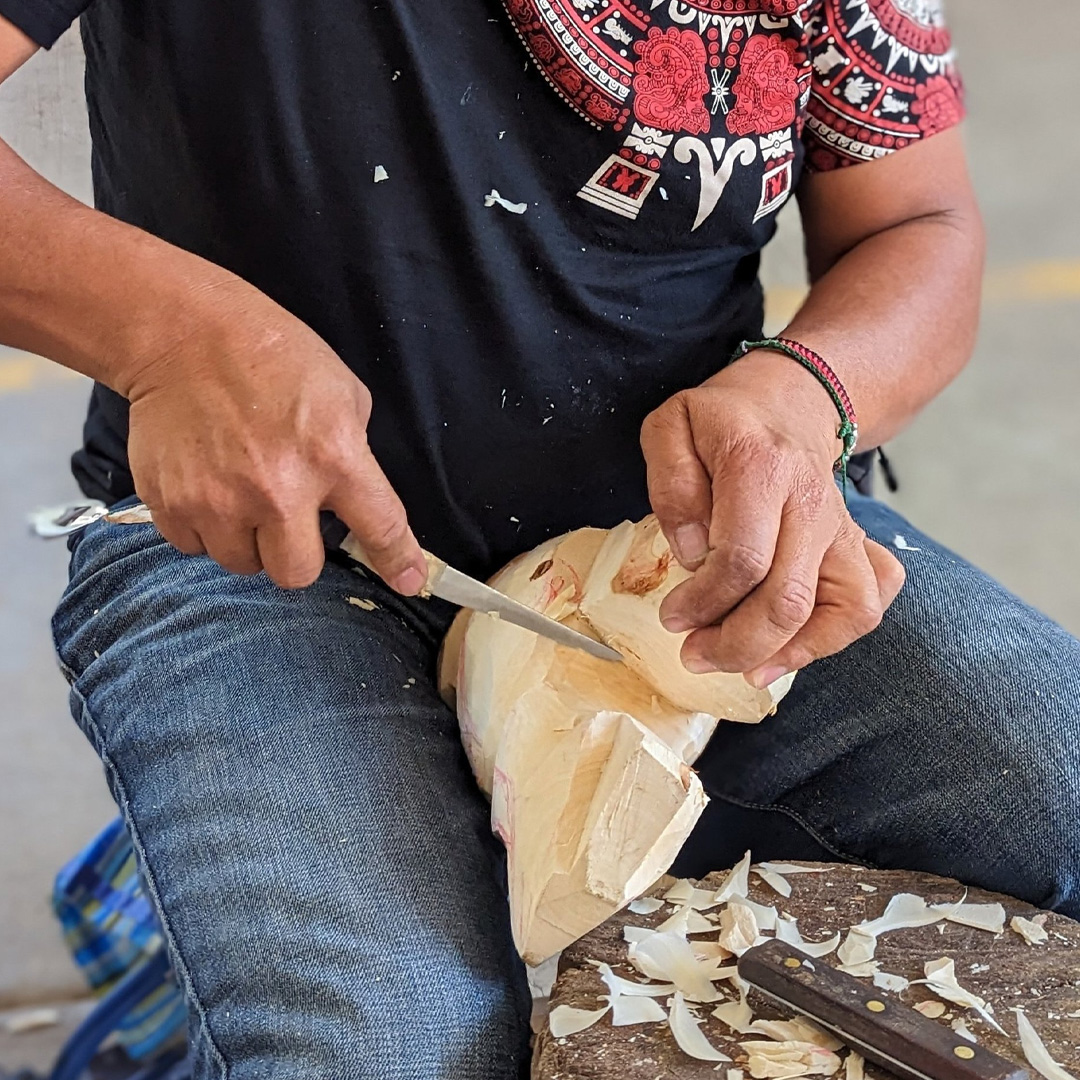Oaxaca City and the surrounding pueblos are commonly known as the capital of Mexico’s Artisan Scene. As in other traditional craft areas, many of the pieces created here were originally made for utilitarian purposes. Traditions have carried on despite the modernization of the surrounding world. Artisans in this region are resourceful and use materials readily available to them such as dirt, plants or a fuzzy white parasite that grows on cacti known as cochineal. Tradition is important to these artisans. They create modern designs based in tradition or their indigenous roots.
Atzompa is a small town known for its beautiful clay work. It’s most famous for ceramic pieces using a technique known as “ombre”, which is a green glaze painted onto the piece. The economy of this small town relies on the clay work the artists produce. At one point in time there was a growing concern over lead in the glaze and they suffered a fall in demand. This caused the artisans to shift to a rustic unglazed approach until the 1960’s when the Mexican government introduced lead free glaze. The artisans here create pieces such as large décor items, cooking vessels, religious articles as well as pottery. The principle tones this community of artists use are amber and green.
San Martin Tilcajete is a magical little town thanks to all the woodcarving shops that create fine, unique and colorful pieces of art. The hand carved figures are known to this community as “Nahual” but to the public as “Alebrijes”. A lot of artists from this community together with the neighboring town of Arrazola started off carving toys or masks but later started to create fun and unconventional combinations of different animals derived from the Zapotec Calendar. Fun Fact: This colorful little town and the Angeles workshop is what inspired the look of the Village in the Disney movie Coco. This movie celebrates and depicts the local culture beautifully.
Located in the center of the state of Oaxaca lies San Bartolo Coyotepec. This artisan town is known for the intricate and striking black clay work known as Barro Negro. Pieces from this town have been featured in museums across the globe. Barro Negro was originally used for utilitarian purposes but with the rise in use of plastic containers demand went down so the artists shifted to creating more decorative pieces. The Barro Negro community didn’t gain traction until the 1960’s when the technique of burnishing was introduced by a woman named Rosa. Dona Rosa, as the community called her, brought this technique that put the shiny finish on the pieces. This allowed artists to start creating again with this new technique, which is similar to the brunido technique used in Tonala, Jalisco.
San Antonino Castillo Velasco is a town that creates beautiful and colorful embroidered textiles. Their garments can be distinguished by the multicolor embroidery which is inspired by the dresses worn by the nearby Ocotlan Valley woman. The tightly packed rainbow tone floral embroidery is signature to San Antonino. It is often referred to as “the land of flowers” due to all the flowers that grow and surround the town. The artists’ work has been featured in museums domestically and internationally. Pieces created are usually done by a group. One person draws the design, embroidery is next and then passed to finish the borders. This craft has been around for over 200 years and families often have their own exclusive design. They pass it down to the next generation of creators.
The state of Oaxaca offers many experiences with its rich culture, variety of food, beautiful landscape and the amazing artisan scene. You have many places to try mezcal, indulge in tasty mole or walk around ancient Zapotec ruins. You can observe some of the artists creating their work in the towns like Teotitlan Del Valle where the women weave these beautiful pieces such as rugs, table runners, pillow shams, shirts, dresses and much more.
 Image by: discover-oaxaca.com
Image by: discover-oaxaca.com
 Image by: discover-oaxaca.com
Image by: discover-oaxaca.com
 Image by: nomadcook.org
Image by: nomadcook.org
 Image by: nomapsorfoottracks.com
Image by: nomapsorfoottracks.com